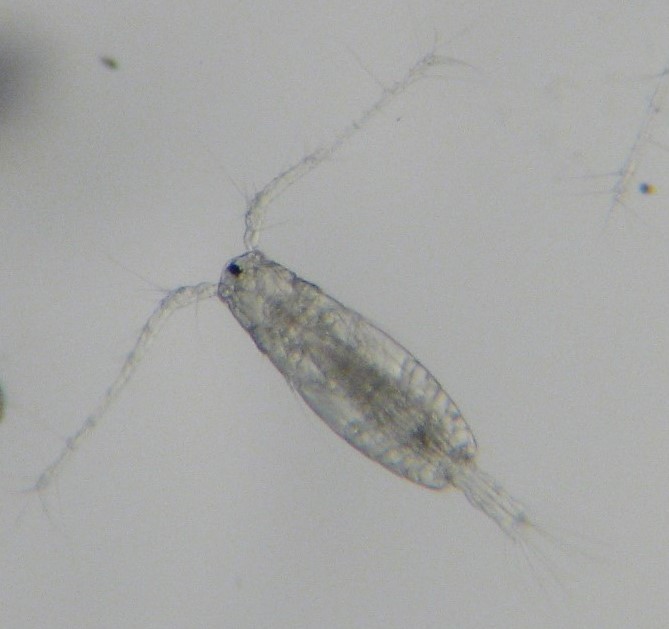
source for many fisheries species and a link between primary producers (phytoplankton) and upper trophic levels. Size is approximately 1 mm. Credit: James Pierson.
A new NCCOS-funded project is underway to assess how low oxygen concentrations and increased water temperatures impact copepod production in the Chesapeake Bay. Arcadia tonsa (pictured here) is the dominant copepod of the bay and a critical food source for many fish species. The goal of this project is to improve the ability of models to predict how hypoxia and temperature will affect management-relevant fisheries and ecosystems. Learn more about this project: https://coastalscience.noaa.gov/project/effects-of-hypoxia-and-warming-on-zooplankton-in-chesapeake-bay/
#ChesapeakeBay #FisheriesManagement #Hypoxia
